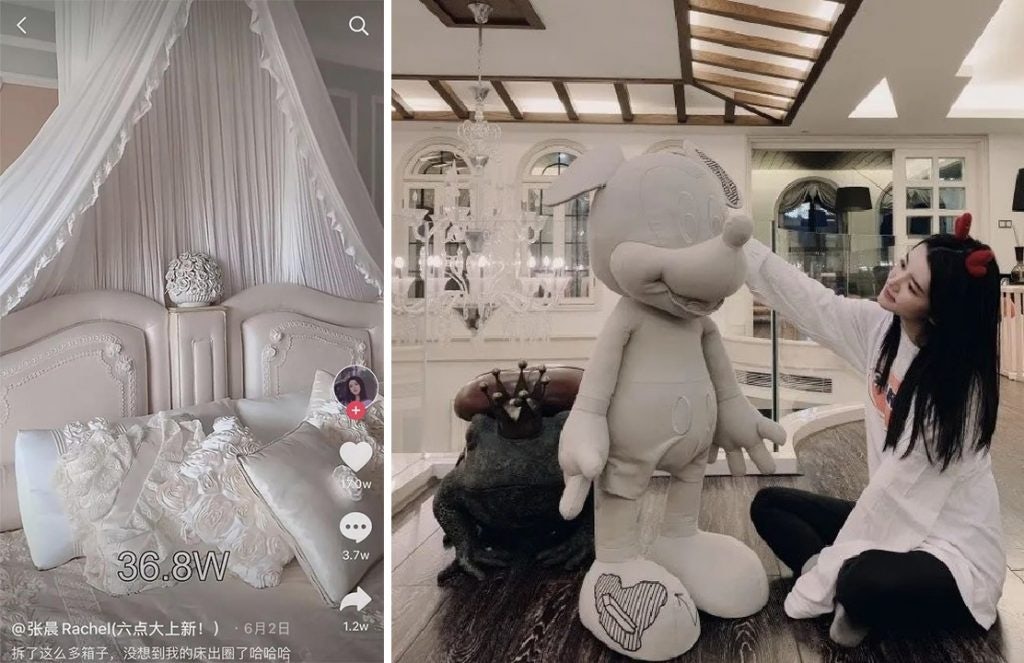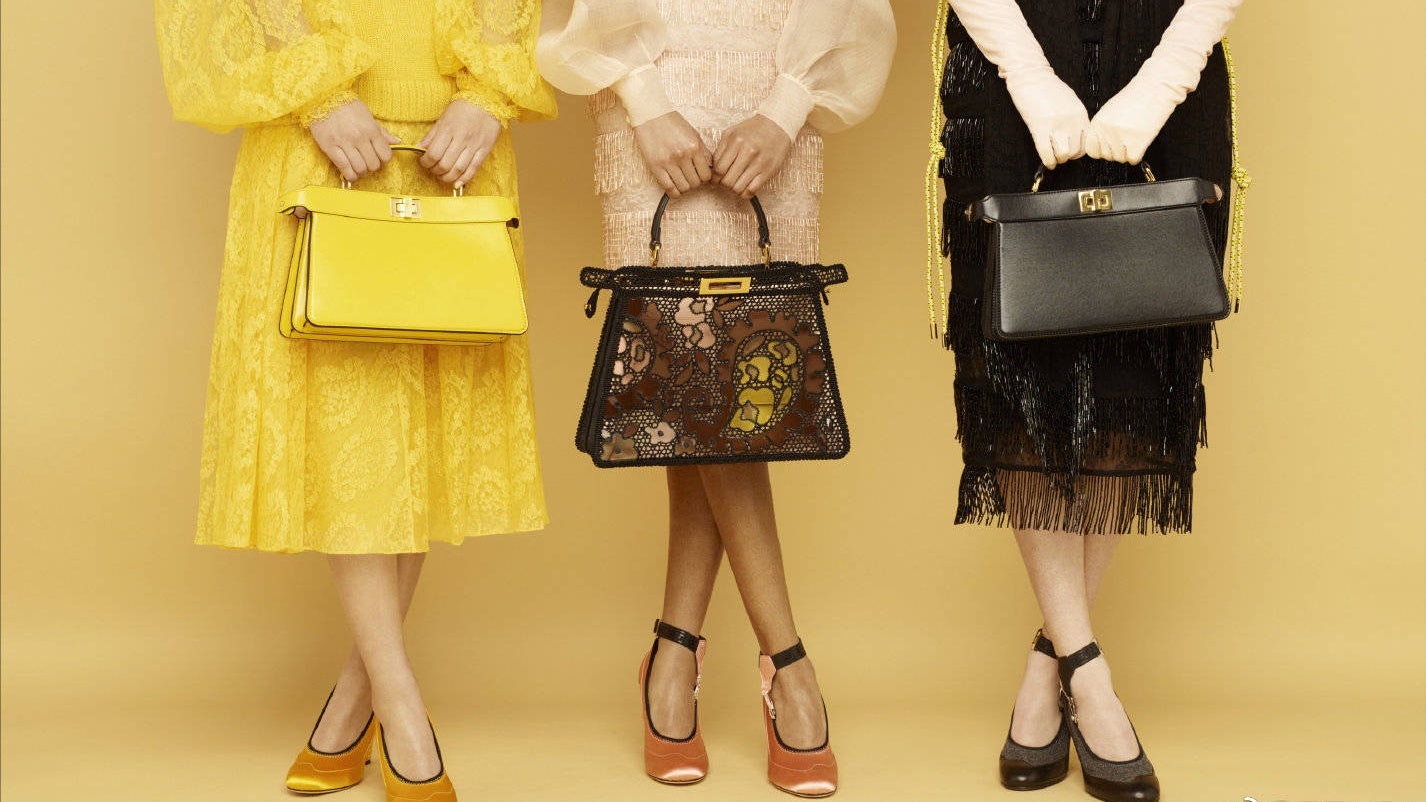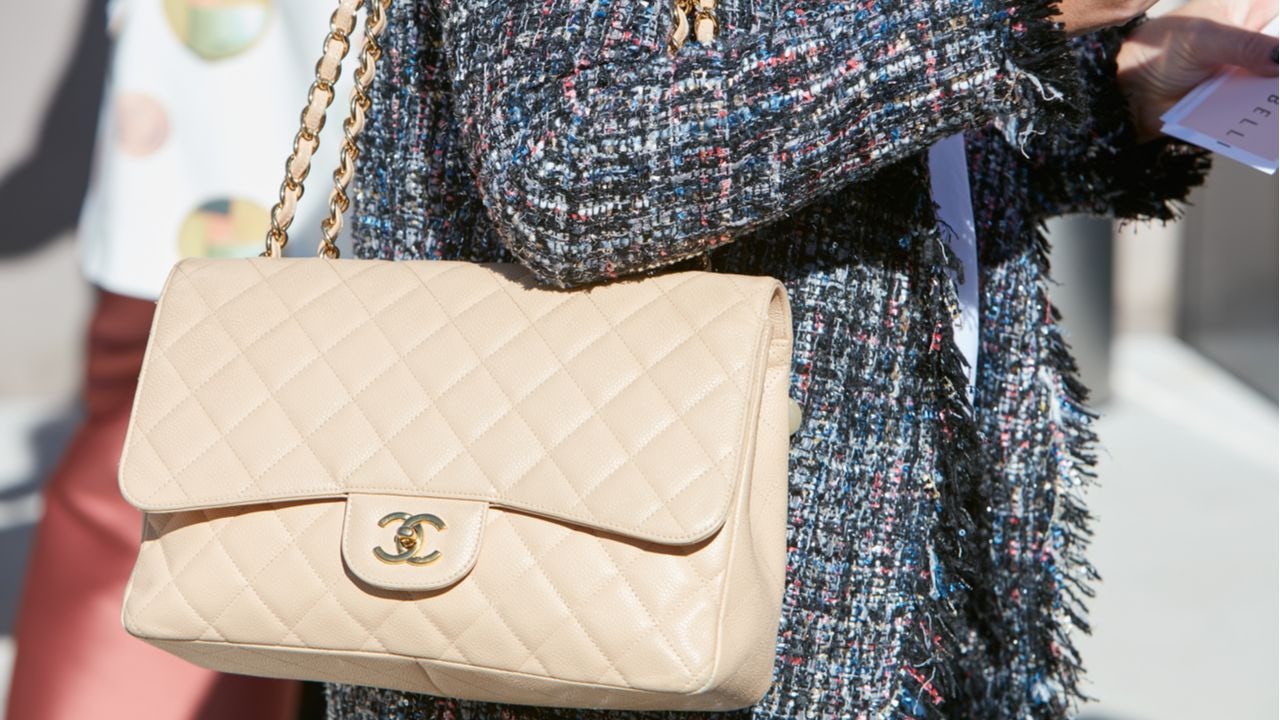Key Takeaways:#
Douyin has banned almost 4,000 users for deliberately showing off their wealth, known as 炫富 (xuanfu), leaving China’s ultra-rich content creators in need of another gimmick.
China has a whole ecosystem dedicated to selling the illusion of wealth, reiterating how young and middle class consumers view luxury as aspirational.
The cleared Douyin accounts should serve as a reminder to luxury brands to vet collaborators, as a KOL mismatch can not only have repercussions on a brand’s reputation but hurt its standing in the eyes of the Chinese government.
Chinese blogger Rachel (@张晨Rachel) leads a life straight out of Crazy Rich Asians. Her bed, a vision of cascading white curtains and hand-carved wood, is valued at over 50,000. Her matching pillows and bedding are inlaid with pearls, and together with her other princess-esque furniture, her bedroom alone crosses into six-figure territory. The rest of her house is equally lavish, from the Fendi chandelier and Versace sofa in her living room to the diamond-encrusted tile in her bathroom.

It’s against this backdrop that the Douyin creator shares her opulent lifestyle with her 1 million followers. But now, her account and many others like it could be in jeopardy. On February 26, China’s TikTok announced it had banned almost 4,000 users for deliberately showing off their wealth, known as 炫富 (xuanfu), since the start of the year.
The short-video platform plans to clean up content that “pollutes the community” and “endangers the physical and mental wellbeing of youth,” including posts that promote money worship, make fun of the poor, inappropriately flaunt social status, display large wads of cash, or involve minors with luxury goods.
While some netizens applauded the move, many weren’t thrilled with the increasing regulations. One Fashion KOL @琛小星 (172,000 followers) commented that the Bytedance company would be better off blocking accounts with distorted values rather than targeting the rich. “It’s 2021 and everyone’s lives are getting better,” he wrote on Weibo. “It shouldn’t be a problem if people want to get rich and have fun.” Another user said the new rules “blindfold” everyday people: “Not only do you not solve the actual problem of the growing wealth gap, but you also close channels for common people to obtain information.”
As Douyin tightens its grip on its 600 million daily active users — no doubt to stay in Beijing’s good graces — China’s rich content creators may need to find another shtick. Until then, here’s a closer look at the “xuanfu” trend and what its crackdown could mean for luxury.
How Chinese youths flaunt their wealth#
There’s no shortage of netizens who have built fanbases — and even profitable careers — out of flexing their luxury lifestyles. Besides @张晨Rachel, Douyin user Cai Luoli (@蔡萝莉) represents another typical example of “xuanfu.” The twenty-something has garnered 16 million followers for both her unique Lolita style and exorbitant purchases, which include Louis Vuitton earbuds and a five-figure RMB trip to Disneyland.
But this isn’t the only type of content running afoul of the new rules, local media pointed out. Rags-to-riches stories, which are sometimes used to market products or scam people, have also been flagged as a no-no. One such account shows a man who went from handing out flyers on the side of the road to becoming a millionaire shortly after, garnering 2 million fans and an average of 10,000 likes. User @氪金研究所 takes a different approach to the trend, interviewing people on the street about the prices of their luxury cars and high-end accessories.

Although these showboating tactics don’t always rub viewers the right way — and certainly don’t mesh well with luxury’s traditional classy image — these KOLs are still worth noting. With their large followings, they not only help drive eyeballs to certain brands and experiences but also reinforce, to an extent, what is considered “cool.”
Social media fuels the fake wealth industry#
Of course, not all of these users are actually rich. Whether for internet clout, business opportunities, or better marriage prospects, there’s a whole ecosystem dedicated to selling the illusion of wealth.
In fact, faking rich is cheaper than it looks. On platforms like Taobao and Xianyu, Alibaba’s secondhand market, netizens can purchase luxury footage of ostentatious cars, enviable scenery, and fine dining for as little as six yuan (0.92). Some services even help to customize these videos, providing a first-person view that users can then add a voice over to before posting on their own social media feeds.
Others go to greater lengths to fake it ‘till they make it. 2020 saw the rise and fall of the “Shanghai Debutante,” a band of young urban women who bragged about their fabulous lives online. Or at least, that’s what it looked like until one writer went undercover and found that all the luxury items and experiences being posted about — the high teas, the handbags, the hotel stays — were actually purchased as a group.
For example, 60 people had split a day’s rental of a Ferrari while four people took turns sharing a pair of second-hand branded stockings. Following the viral article, Douyin and Bilibili released style guides to help its users achieve the “debutante” look without looking tacky (or going to such extremes), ultimately reiterating how China’s young and middle class view luxury as aspirational.
Why Douyin’s crackdown should concern luxury#
While luxury brands on Douyin, such as Gucci and Prada, are unlikely to be directly affected by the new rules, the cleared user accounts should serve as a reminder to vet brand collaborators. The rules of the game are constantly changing — the recent attack on Little Fresh Meat is just one example — and a KOL mismatch can not only have repercussions on a brand’s reputation but hurt its standing in the eyes of the Chinese government.
Moreover, brands should note the broader context at play. For one, the platform’s clampdown on wealth flaunting comes as Beijing enacts a larger cleanup campaign against internet companies. Last month, China’s Cyberspace Administration announced that online publishers will need to have a government-approved credential before publishing on a wide range of subjects, dealing a blow to citizen journalists and other content creators.
Prior to that, the internet watchdog turned its attention to livestreaming, requiring foreigners and celebrities to report to local authorities before big, livestreamed events and limiting spending by any single user — a move that could hinder brands branching into China’s growing e-commerce space.
Taking another step back, the “xuanfu” phenomenon also reflects a bigger problem in China: the growing wealth gap. To date, China sports one of the world’s most unequal economies. According to the Hurun Wealth Report 2020, more than two million Chinese families had a household wealth accumulation of 10 million yuan (1.5 million) or more as of the end of 2019, and these families spent more than three trillion yuan last year.
On the one hand, this rising inequality actually presents an opportunity for brands, particularly as the “haves” feel compelled to differentiate themselves with the “have-nots” by parading their designer goods. On the other hand, Beijing has long cracked down on obscene displays of wealth and may continue to do so as Xi eyes a third-term in office. While this certainly won’t kill China’s appetite for luxury, it could mean the country’s ultra-rich keep their heads low and present their fortunes, including their luxury collections, in less conspicuous ways.


